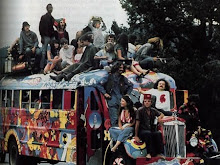Introduction:
We are trying to determine the number of grams of Copper that well be produced in an oxidation reduction reaction with aluminum and copper II sulfate pentahydrate. Also while experimenting we are trying to determine the percent yield, actual yield, theoretical yield, limiting reagent, molar mass, and molar ratio of the substances.We know that when a substance is reacted with a compound and a the substance interchanges with the compound it is called a single displacement reaction which occurs within this lab where we see Aluminum exchanges with copper sulfate to produce copper and aluminum sulfate.
Hypothesis:
We would expect to find Copper II sulfate pentahydrate to go through a single displacement oxidation reduction reaction where aluminum would exchange with copper and form aluminum sulfate. Therefore, leaving behind copper which will later be filtered out and weighed.
Materials:
- medium sized beaker about 250-400 ml
- ring stand
- bunsen burner
- 10 grams of Copper II sulfate pentahydrate
- glass stiring rod
- .424 grams Aluminum powder
- filter paper two sizes
- erlenmeyer flask
- funnel
- striker
We always take safety precautions, in this lab especially with chemical reactions and glass. We wore safety goggles, aprons, and closed toed shoes.
Procedure:
First we obtained a 250-400 ml beaker and added 100ml of water to it. Then we setup up a bunsen burner and ring stand to heat the beaker. Once it began heating we add about 10 grams of copper II sulfate pentahydrate. We then recorded the mass in data table. Then we slowly added the copper crystals to the heating water. With a glass stirring-rod, we stirred the solution until the copper II sulfate was dissolved. While dissolving the copper we multi-tasked and got the aluminum powder. Then we measured about .424 grams of Aluminum and recorded the mass in the data table. We then carefully added the aluminum to the solution stirring continuously with the rod, allowing the reaction to occur. Then we continued for about 15-20 minutes, once dissolved, we removed it from heat. Then we used filter paper to make a filter within the funnel to filter the residue, catching the residue and filtering the solution into an Erlenmeyer flask. Once we filtered, we rinsed out the beaker with water and let the filter paper dry out. Then when dry, we recorded the mass in the data table. Then we discarded of the materials properly.
Results (Data):
From the single displacement reaction between Aluminum and Copper Sulfate, the yield is Aluminum sulfate and copper. The amount of copper filtered out by the filter and Erlenmeyer flask yielded 0.31 grams of Copper. Also an evaporation of 40 ml of water from boiling.
Mass of Copper II sulfate pentahydrate=10g
Mass of Aluminum foil=0.424g
Mass of coffee filter=1.5g
Mass of dry residue/product +
coffee filter=1.81g
Conclusions:
We accept our stated hypothesis above in the introduction. We experienced a single displacement reaction with the correct elements reacting and replacing each other to yield grams of copper. We started with 0.424 grams of Aluminum plus 10 grams of CopperII sulfate pentahydrate which yielded 0.31 grams of Copper and Aluminum Sulfate. The Pentahydrate combined with the 100ml of H2O. At the end of boiling and the reaction we ended up with 60ml of H2O through evaporation. The filter weighed 1.5 grams and combined dried solution and filter paper weighed 1.81 grams. We learned that we need to use safety and precise measurements or fatal resulting consequences can happen, for example one group used to much aluminum with copper sulfate and it exploded out of the beaker while heating. Also one groups glass beaker fell off the ring stand onto the ground and shattered into millions of pieces and without safety injuries could have occurred. Precise measurement errors could have occurred or overheating of the solution could produce unreliable results.1.Al+CuSO4*5H2O--->Cu + AlSO4
4.0.999grams of Cu
5.1.19
6.119%
7.We cant tell exactly how each element will react each time.

Maybe make the font bigger so it is easier to read but looks good keep up the good work.
ReplyDeleteneeds pictures
ReplyDelete